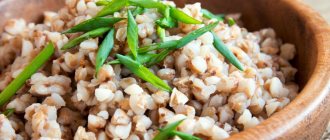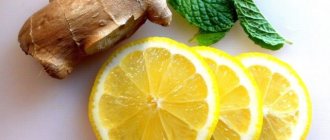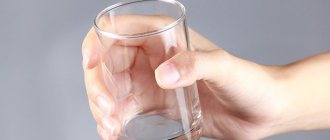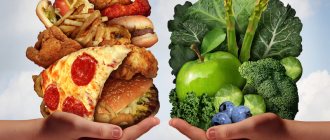“Space diet” by Sergei Sivokho: without denying himself anything, the comedian lost 42 kg in 3 months
The Dash Diet or Dietary Approaches to Stop Hypertension is a special dietary regimen designed to treat high blood pressure. This diet also helps prevent hypertension. And what’s important is that thanks to Dash you can lose weight.
The Dash Diet was originally developed as a treatment for hypertension. However, studies and reviews have proven the effectiveness of the diet not only in terms of improving heart function, normalizing cholesterol levels, lowering blood pressure, but also summed up significant success in losing weight and improving metabolic processes. The Dash diet can be used to prevent cardiovascular diseases, diabetes, kidney disease, and cancer.
This diet does not promise quick results, but it lays a solid foundation for health and beauty. What distinguishes Dash from many other therapeutic diets is that it does not cause harm due to strict restrictions , but at the same time allows you to normalize weight and improve your general condition.
For several years in a row, the Dash diet was considered in the United States the most popular among all diets, including wellness ones , as well as among methods of preventing diabetes. It also occupied one of the leading positions among nutritional regimens in terms of health-improving effects on the heart. In ratings for ease and convenience, as well as in ratings for weight loss effectiveness, it was in the top ten.
How I lost half my weight in six months
General rules
Non-drug methods of treating arterial hypertension are the most important component of complex therapy, making it possible to influence negative risk factors that contribute to increased blood pressure.
Long-term and pronounced exposure to such factors reduces the adaptive capabilities of the body in general and the cardiovascular system in particular, which leads to persistent chronic increases in blood pressure ( hypertension ). It has been established that properly organized nutrition with high blood pressure is a factor not only in stabilizing it, but also in lowering it to the age norm.
One of these types of diets is the dash diet, the acronym of which stands for Dietary Approaches to Stop Hypertension, which translates as “a dietary approach to preventing hypertension.” Unlike many other diets, the recommended diet of the “DASH” system (a diet reduced in total fat, sodium, saturated fat, cholesterol and the inclusion of fruits, vegetables, low-fat dairy products and enriched with calcium, magnesium, potassium) is based on reliably confirmed results of clinical studies of volunteers, which indicate that systolic pressure during a two-week diet decreased on average by 11 mm, and diastolic pressure by 6 mm Hg. Art.
These results suggest that the dash diet may be an effective alternative to drug therapy, especially for patients with stage 1 hypertension, and may eliminate/delay the onset of switching to antihypertensive medications.
The main principles of the DASH diet are:
- Limiting the total salt intake to 5-6 g/day and 2-3 g per day in a more strict version of the diet, which is achieved by eliminating salt during the cooking process (only ready-made dishes can be lightly added) and excluding foods containing salt from the diet ( smoked meats, fast food, pickles and marinades, canned food, sausages).
- Replacing wheat bread with grain and wholemeal bread, and pasta with brown rice.
- Consuming exclusively dietary meat or fish in small quantities (150-200 g/day).
- The mandatory presence of cereal products and sprouted grains in the diet.
- Increasing the amount of vegetables and fruits to 500-600 g/day.
- Replacing animal fats/trans fats with vegetable (linseed, olive, sunflower) oils. The optimal rate is 2 tablespoons/day.
- Inclusion of low-fat/low-fat dairy and fermented milk products in the diet.
- Inclusion in the diet of legumes and seeds (stewed beans, boiled peas, soy and lentil dishes, pumpkin seeds, sunflower seeds, sesame seeds) in the amount of 350 - 400 g/week.
- Limiting foods containing simple carbohydrates (almost all sweets, sugar) to 75 g per week.
The daily diet includes the following products: bread and cereal products (4 cups of cereals, rice, pasta), meat/fish products (150-200 g of meat or 250 g of fish), vegetables (500-600 g), fruits (250 -300 g), low-fat/low-fat dairy products (500-700 ml yogurt/kefir, or 400 g low-fat cottage cheese), vegetable fats (3 tablespoons), legumes, nuts, seeds (3 glasses per week), sweets (150- 200 g per week).
There are several diet options, but on average, the energy value of the diet is about 2000 Kcal/day, which allows patients to lose excess body weight.
It should be noted that the DAS diet for weight loss, as such, is not intended; rather, we can talk about weight loss as a beneficial side effect for patients, since the antihypertensive effect of weight loss in patients with hypertension and increased body weight has been reliably proven and there is a direct correlation between weight loss in such patients and a decrease in blood pressure in the proportion of 1 kg/1 mm Hg. Art.
Additional beneficial effects of this diet include a decrease in total cholesterol and, especially, low-density lipoproteins (LDL), which is due to the limitation of dietary cholesterol and saturated fat.
Mandatory conditions for achieving the effect of dietary nutrition are: feasible daily physical activity, cessation of smoking and alcohol abuse.
Basic principles
What makes the dash diet different from the rest?
- The main concept is “portion”, the volume of which and the daily norm are clearly stated.
- Balanced diet: it contains fats, proteins and carbohydrates.
- Focus on fiber: it is good for the heart and blood vessels and at the same time provides long-term satiety, allowing you not to feel hungry and eat smaller portions.
- Enriching the body with potassium, magnesium and calcium through proper nutrition, not medications.
- Minimum fat intake.
- Limiting salt, ideally avoiding it completely.
- There is no time limit; you can stay on the dash diet for the rest of your life.
- It involves a gradual transition to a vegetarian diet.
A stepwise transition to a new food system is important: prohibited foods are excluded from the menu gradually (no more than one per day). How to do this step by step:
- Keep a diary to take into account the amount of calories consumed, portion sizes and track violations of prohibitions for self-control.
- Limit salt intake.
- Increase the amount of fruit.
- Avoid fatty meats.
- Replace coffee and tea with fermented milk drinks and natural juices.
- Do not eat drinks with solid food (cookies, sandwiches).
- Include more vegetables in your diet.
- Replace sweets and baked goods with fruits, nuts, and dried fruits.
The Dash diet is primarily prescribed for hypertension; losing weight is not its ultimate goal, so you don’t need to expect quick results. On average, losses can range from one and a half to 5 kg per week.
Authorized Products
The dash diet includes:
- Dietary red meat in boiled/baked form, as well as chicken, turkey, rabbit. Culinary processing of meat involves pre-boiling it, draining the broth and further cooking it in a new portion of water.
- Wheat/rye whole grain bread or with added bran, dry biscuits.
- Soups in vegetable broth with well-cooked cereals/vegetables with the addition of garden herbs.
- Sea/river fish, seafood, seaweed, fish oil.
- Vegetables (potatoes, cabbage, carrots, beets, zucchini, pumpkin, eggplants), both fresh and cooked (baked, boiled, stewed) or in the form of vinaigrettes, vegetable stews, seasoned with olive/linseed oil.
- Various types of cereal products (barley, millet, buckwheat), mainly whole grains and pasta made from durum flour in the form of a casserole with vegetables/cottage cheese.
- Low-fat/low-fat fermented milk products, milk/tomato sauces with vegetable broth, sour cream/cream sauces (only in dishes), chicken eggs up to 3 sh. per week, soft-boiled.
- Cold pressed vegetable oils (olive, flaxseed, sunflower, corn).
- Fruits/berries in any form (fresh, in compotes, jelly, jelly).
- Drinks - weak tea with milk, drinks (coffee substitutes), rosehip infusion, still mineral water, vegetable/berry juices, herbal teas.
Table of permitted products
| Proteins, g | Fats, g | Carbohydrates, g | Calories, kcal | |
Vegetables and greens | ||||
| greenery | 2,6 | 0,4 | 5,2 | 36 |
| eggplant | 1,2 | 0,1 | 4,5 | 24 |
| zucchini | 0,6 | 0,3 | 4,6 | 24 |
| cabbage | 1,8 | 0,1 | 4,7 | 27 |
| broccoli | 3,0 | 0,4 | 5,2 | 28 |
| boiled cauliflower | 1,8 | 0,3 | 4,0 | 29 |
| bulb onions | 1,4 | 0,0 | 10,4 | 41 |
| carrot | 1,3 | 0,1 | 6,9 | 32 |
| cucumbers | 0,8 | 0,1 | 2,8 | 15 |
| salad pepper | 1,3 | 0,0 | 5,3 | 27 |
| salad | 1,2 | 0,3 | 1,3 | 12 |
| beet | 1,5 | 0,1 | 8,8 | 40 |
| celery | 0,9 | 0,1 | 2,1 | 12 |
| asparagus | 1,9 | 0,1 | 3,1 | 20 |
| tomatoes | 0,6 | 0,2 | 4,2 | 20 |
| Jerusalem artichoke | 2,1 | 0,1 | 12,8 | 61 |
| pumpkin | 1,3 | 0,3 | 7,7 | 28 |
| lentils | 24,0 | 1,5 | 42,7 | 284 |
Fruits | ||||
| avocado | 2,0 | 20,0 | 7,4 | 208 |
| oranges | 0,9 | 0,2 | 8,1 | 36 |
| pomegranate | 0,9 | 0,0 | 13,9 | 52 |
| grapefruit | 0,7 | 0,2 | 6,5 | 29 |
| pears | 0,4 | 0,3 | 10,9 | 42 |
| kiwi | 1,0 | 0,6 | 10,3 | 48 |
| lemons | 0,9 | 0,1 | 3,0 | 16 |
| mango | 0,5 | 0,3 | 11,5 | 67 |
| tangerines | 0,8 | 0,2 | 7,5 | 33 |
| nectarine | 0,9 | 0,2 | 11,8 | 48 |
| peaches | 0,9 | 0,1 | 11,3 | 46 |
| apples | 0,4 | 0,4 | 9,8 | 47 |
Berries | ||||
| gooseberry | 0,7 | 0,2 | 12,0 | 43 |
| Red currants | 0,6 | 0,2 | 7,7 | 43 |
| black currant | 1,0 | 0,4 | 7,3 | 44 |
Nuts and dried fruits | ||||
| nuts | 15,0 | 40,0 | 20,0 | 500 |
| cashew | 25,7 | 54,1 | 13,2 | 643 |
| sesame | 19,4 | 48,7 | 12,2 | 565 |
| flax seeds | 18,3 | 42,2 | 28,9 | 534 |
| fenugreek seeds | 23,0 | 6,4 | 58,3 | 323 |
| sunflower seeds | 20,7 | 52,9 | 3,4 | 578 |
Cereals and porridges | ||||
| buckwheat (kernel) | 12,6 | 3,3 | 62,1 | 313 |
| oat groats | 12,3 | 6,1 | 59,5 | 342 |
| cereals | 11,9 | 7,2 | 69,3 | 366 |
| millet cereal | 11,5 | 3,3 | 69,3 | 348 |
| barley grits | 10,4 | 1,3 | 66,3 | 324 |
Bakery products | ||||
| Rye bread | 6,6 | 1,2 | 34,2 | 165 |
Raw materials and seasonings | ||||
| honey | 0,8 | 0,0 | 81,5 | 329 |
Dairy | ||||
| skim milk | 2,0 | 0,1 | 4,8 | 31 |
| natural yogurt 2% | 4,3 | 2,0 | 6,2 | 60 |
Cheeses and cottage cheese | ||||
| cottage cheese 0.6% (low fat) | 18,0 | 0,6 | 1,8 | 88 |
| curd tofu | 8,1 | 4,2 | 0,6 | 73 |
Meat products | ||||
| beef | 18,9 | 19,4 | 0,0 | 187 |
| rabbit | 21,0 | 8,0 | 0,0 | 156 |
Sausages | ||||
| boiled diet sausage | 12,1 | 13,5 | 0,0 | 170 |
Bird | ||||
| chicken fillet | 23,1 | 1,2 | 0,0 | 110 |
| turkey | 19,2 | 0,7 | 0,0 | 84 |
Fish and seafood | ||||
| fish | 18,5 | 4,9 | 0,0 | 136 |
| squid | 21,2 | 2,8 | 2,0 | 122 |
| mussels | 9,1 | 1,5 | 0,0 | 50 |
| seaweed | 0,8 | 5,1 | 0,0 | 49 |
Oils and fats | ||||
| linseed oil | 0,0 | 99,8 | 0,0 | 898 |
| olive oil | 0,0 | 99,8 | 0,0 | 898 |
| sunflower oil | 0,0 | 99,9 | 0,0 | 899 |
Non-alcoholic drinks | ||||
| mineral water | 0,0 | 0,0 | 0,0 | — |
| green tea | 0,0 | 0,0 | 0,0 | — |
| * data is per 100 g of product | ||||
Where to start - tips for beginners
A few days before starting the Dash diet, it is advisable to keep a notebook in which to write down everything that was eaten for breakfast, lunch, dinner, and also in between meals. By analyzing the records, it is easier to make adjustments to the menu, gradually replacing your favorite dishes until they fully comply with the principles of the blood pressure diet. As you can see, you don’t have to suddenly start changing your habits and life. Here are some examples of tips that will help you change your diet:
- There are few vegetables in the diet, add one serving for dinner or lunch;
- no fruits, add them to your snack between lunch and dinner;
- When reading the composition of products, choose those that do not contain preservatives, dyes or flavors;
- gradually introduce dairy products with a low fat content - kefir;
- replace instant cereals with whole grains;
- in winter, use frozen vegetables, fruits, berries;
- add nuts, seeds and legumes to your menu.
And also read on our website: Tooth pain under the crown
However, this is not all the recommendations. When switching to the Dash diet for hypertension, you should simultaneously begin to reduce the caloric content of food, for this:
- eat more fruits instead of the usual sweets. This will save 200 kcal;
- use vegetables as a side dish - 50 kcal;
- low-fat or low-fat foods will reduce calorie content by 70 kcal.
You can reduce calorie content by changing portion sizes, using smaller plates and drinking up to 1.5 liters of water throughout the day.
Fully or partially limited products
The dash diet includes the following exceptions:
- Rich broths from meat/fish and first courses based on them.
- Fresh wheat bread, butter/puff pastry, pastries.
- Fatty meat, culinary/animal fats, poultry meat (duck, goose), sausages, smoked meats, offal.
- Salted/smoked fish, fish caviar, canned fish/meat, mushroom sauces, cream, sour cream, fatty cheese/cottage cheese.
- Confectionery with cream, ice cream, cocoa, chocolate, black coffee and strong tea, preserves, jam.
- The consumption of salt, sugar, pickles, marinades, grapes, carbonated sodium mineral waters, and alcoholic beverages is limited.
Table of prohibited products
| Proteins, g | Fats, g | Carbohydrates, g | Calories, kcal | |
Vegetables and greens | ||||
| vegetables legumes | 9,1 | 1,6 | 27,0 | 168 |
| canned vegetables | 1,5 | 0,2 | 5,5 | 30 |
| sauerkraut | 1,8 | 0,1 | 4,4 | 19 |
| pickles | 0,8 | 0,1 | 1,7 | 11 |
| radish | 1,2 | 0,1 | 3,4 | 19 |
| white radish | 1,4 | 0,0 | 4,1 | 21 |
| red radish | 1,2 | 0,1 | 3,4 | 20 |
| black radish | 1,9 | 0,2 | 6,7 | 35 |
| spinach | 2,9 | 0,3 | 2,0 | 22 |
| sorrel | 1,5 | 0,3 | 2,9 | 19 |
Fruits | ||||
| bananas | 1,5 | 0,2 | 21,8 | 95 |
Berries | ||||
| grape | 0,6 | 0,2 | 16,8 | 65 |
Mushrooms | ||||
| mushrooms | 3,5 | 2,0 | 2,5 | 30 |
Nuts and dried fruits | ||||
| raisin | 2,9 | 0,6 | 66,0 | 264 |
Confectionery | ||||
| candies | 4,3 | 19,8 | 67,5 | 453 |
| pastry cream | 0,2 | 26,0 | 16,5 | 300 |
| shortbread dough | 6,5 | 21,6 | 49,9 | 403 |
Ice cream | ||||
| ice cream | 3,7 | 6,9 | 22,1 | 189 |
Cakes | ||||
| cake | 4,4 | 23,4 | 45,2 | 407 |
Chocolate | ||||
| chocolate | 5,4 | 35,3 | 56,5 | 544 |
Raw materials and seasonings | ||||
| mustard | 5,7 | 6,4 | 22,0 | 162 |
| mayonnaise | 2,4 | 67,0 | 3,9 | 627 |
Dairy | ||||
| milk 3.6% | 2,8 | 3,6 | 4,7 | 62 |
| milk 4.5% | 3,1 | 4,5 | 4,7 | 72 |
| cream | 2,8 | 20,0 | 3,7 | 205 |
| sour cream 25% (classic) | 2,6 | 25,0 | 2,5 | 248 |
Cheeses and cottage cheese | ||||
| cheese | 24,1 | 29,5 | 0,3 | 363 |
| cottage cheese 18% (fat) | 14,0 | 18,0 | 2,8 | 232 |
Meat products | ||||
| pork | 16,0 | 21,6 | 0,0 | 259 |
| pork liver | 18,8 | 3,6 | 0,0 | 108 |
| pork kidneys | 13,0 | 3,1 | 0,0 | 80 |
| pork fat | 1,4 | 92,8 | 0,0 | 841 |
| salo | 2,4 | 89,0 | 0,0 | 797 |
| beef liver | 17,4 | 3,1 | 0,0 | 98 |
| beef kidneys | 12,5 | 1,8 | 0,0 | 66 |
| beef brains | 9,5 | 9,5 | 0,0 | 124 |
Sausages | ||||
| smoked sausage | 16,2 | 44,6 | 0,0 | 466 |
| smoked sausage | 9,9 | 63,2 | 0,3 | 608 |
| sausages | 10,1 | 31,6 | 1,9 | 332 |
| sausages | 12,3 | 25,3 | 0,0 | 277 |
Bird | ||||
| smoked chicken | 27,5 | 8,2 | 0,0 | 184 |
| duck | 16,5 | 61,2 | 0,0 | 346 |
| smoked duck | 19,0 | 28,4 | 0,0 | 337 |
| goose | 16,1 | 33,3 | 0,0 | 364 |
Fish and seafood | ||||
| smoked fish | 26,8 | 9,9 | 0,0 | 196 |
| salted fish | 19,2 | 2,0 | 0,0 | 190 |
| Red caviar | 32,0 | 15,0 | 0,0 | 263 |
| black caviar | 28,0 | 9,7 | 0,0 | 203 |
| canned fish | 17,5 | 2,0 | 0,0 | 88 |
| cod (liver in oil) | 4,2 | 65,7 | 1,2 | 613 |
Oils and fats | ||||
| animal fat | 0,0 | 99,7 | 0,0 | 897 |
| cooking fat | 0,0 | 99,7 | 0,0 | 897 |
Non-alcoholic drinks | ||||
| instant coffee dry | 15,0 | 3,5 | 0,0 | 94 |
| black tea | 20,0 | 5,1 | 6,9 | 152 |
| * data is per 100 g of product | ||||
Alcohol increases blood pressure!
Alcohol, if you drink a lot of it, can raise your blood pressure. Let me also remind you that the following people suffer from excessive alcohol consumption:
- Liver (remember about cirrhosis)
- Brain (every morning after drinking, you flush a couple of thousand dead brain cells down the toilet along with your urine)
- Heart (alcoholic cardiomyopathy does not develop immediately, but with many years of drinking it occurs quite often)
In addition, alcohol is a high-calorie product. So in 50 g of vodka or cognac, for example, 120 kcal, in a glass of beer 0.5 l - 230 kcal, in a glass of dry wine 150 ml - 100 kcal, but an average cocktail of 250-300 ml “comes out” at 350-400 , or even up to 600 kcal (ah, Pina Colada).
Now let’s calculate how many extra kcal you consumed on the last holiday called Friday and with what snack.
That's it, now about the pleasant things.
In moderation, normal alcohol is a good remedy
- get warm
- Dilate blood vessels, which means reduce blood pressure
- Reduce stress and remove unnecessary tension
- Protect blood vessels from cholesterol (although this works better for the French, or at least in combination with the Mediterranean diet)
- Reduce blood sugar (which can be both a plus and a minus, but more on that here)
DASH Diet Menu (Diet Mode)
The DASH diet menu is compiled according to the permitted products listed above. Below is a tentative menu for the week:
Monday
| Breakfast |
|
| Dinner |
|
| Dinner |
|
Tuesday
| Breakfast |
|
| Dinner |
|
| Dinner |
|
Wednesday
| Breakfast |
|
| Dinner |
|
| Dinner |
|
Thursday
| Breakfast |
|
| Lunch |
|
| Dinner |
|
| Dinner |
|
Friday
| Breakfast |
|
| Dinner |
|
| Dinner |
|
Saturday
| Breakfast |
|
| Dinner |
|
| Dinner |
|
Sunday
| Breakfast |
|
| Dinner |
|
| Dinner |
|
When you feel hungry, you are allowed to snack on fruit.
Dash diet for hypertension
The menu for hypertensive patients is designed in a special way that it contains a lot of food high in calcium, plant fiber, potassium, magnesium, other extremely important microelements, as well as pure protein. All this normalizes the most important processes in the body and improves the condition of everyone, not just people with high blood pressure. Actually
The dash diet is a direct dietary treatment for a disease such as hypertension. Moreover, it is affordable, effective, with a “side effect” in the form of weight loss.
Here are additional tips for patients with this problem:
- limit even healthy sweets - eat them no more than 4 times a week;
- eat fish or lean meat every day (2 modest servings);
- also – 2 servings of milk per day;
- vegetables and unsweetened fruits – 5 times a day;
- cereals - every day.
Reviews and results
Nutrition according to the DASH diet, according to patient reviews, especially in the initial stages of hypertension, is an effective treatment method that helps normalize increased body weight, blood pressure and cholesterol levels.
The diet, in general, is well tolerated, but some patients suffer from low-salt foods, lack of smoked foods, and limiting sweets and sugar.
- “... The Dash diet was recommended to me by my friend in misfortune - a hypertensive patient with ten years of experience. I studied the literature about this diet on an English-language website, it’s good that I speak English at the required level. Oddly enough, I didn’t discover anything new for myself. Almost the same as the diet of treatment Table No. 10 for hypertensive patients, which I have been on for almost a year. The main thing is to limit salt, everything salty and smoked, meat and sweets. Rather, this is a tribute to fashion, so I did not change anything in my diet, which my local doctor described in detail to me. Almost a year has passed, the pressure has been stabilized, I have lost weight, and my overall health has improved”;
- “... I read about the Dash diet on a specialized forum for hypertensive patients. I decided to try it because my blood pressure has been unstable lately and is often elevated after stress. For a long time I couldn’t eat lightly salted food, I got used to sausages, salted fish, and ham. And I often indulged myself in sweets. But over time, I learned to flavor food with mild herbal spices, garden herbs, garlic/onions, and dried fruits. After six months, my weight returned to normal, shortness of breath disappeared, and my blood pressure leveled out. I practice walking and cycling.”
Advantages and disadvantages
Advantages:
- lowers cholesterol and blood pressure, improves heart function, normalizes blood circulation and glucose levels, prevents the development of cancer and type II diabetes;
- lack of hunger;
- developing correct eating habits;
- slow, sustainable and guaranteed weight loss;
- despite the fact that it was originally intended for hypertensive patients, it can be followed by everyone;
- Such food will cost less than usual.
Flaws:
- it will take months for a complete restructuring of the body and significant weight loss;
- fast foods and semi-finished products are prohibited;
- a long-term absence of animal fats in the diet leads to dry skin, aggression, fatigue, decreased attention, vision problems and joint pain;
- trans fats in the form of legal margarine are harmful to health;
- A fairly large amount of carbohydrates in the menu is the main reason for weight gain.
Last questions
Is the Dash Diet compatible with alcohol and caffeine consumption?
Alcohol in this diet due to its ability to increase blood pressure when consumed about 50 grams of pure alcohol. This amount of alcohol also increases the risk of heart disease. During the dash diet, alcohol consumption is allowed in terms of 25 grams of pure alcohol. But not more.
About caffeine consumption. If you do not exceed the caffeine consumption limit determined by doctors, then this amount is quite acceptable. After all, caffeine increases blood pressure short-term and not on a long-term basis. But you shouldn’t overuse it and immediately drink your daily dose of caffeine in 5 minutes. Regularity is required everywhere
Is it necessary to do physical exercise?
If your goal is weight loss, then exercise is a must. Regular physical activity also has a positive effect on stabilizing blood pressure. The minimum time recommended by doctors for fitness is 30 minutes of moderate activity. Examples of moderate activity:
• Cycling (1 kilometer in 4 minutes) • Brisk walking (9 minutes per kilometer) • Running (6 minutes per kilometer) • Swimming (20 minutes) • Housework (60 minutes)
How to start eating according to this nutrition system?
I’ll tell you a few strategies that you need to follow if you decide to use the Dash diet in your diet:
• Change your diet gradually. Slowly increase those food groups that you consume less of. And reduce those food groups, such as trans fats or fatty red meats, that are recommended to be avoided on this diet. • Add physical activity. I have already spoken about it above. It will be useful to read articles about fitness and health. • Celebrate any success. Make a mental note. Or reward yourself with some actions. • Get support from your doctor if possible. Perhaps your doctor can give you some additional helpful tips.
The basis of the Dash diet is built on increasing the consumption of vegetables and fruits. This is the most important factor for a diet for hypertension. Try it and the result will not take long to arrive. But in addition to lowering your blood pressure as a bonus, you will also receive other benefits for your health that will not be superfluous or unnecessary for you. It’s not for nothing that the Dash diet has been in first place in the ranking of the best diets for health for so many years.










